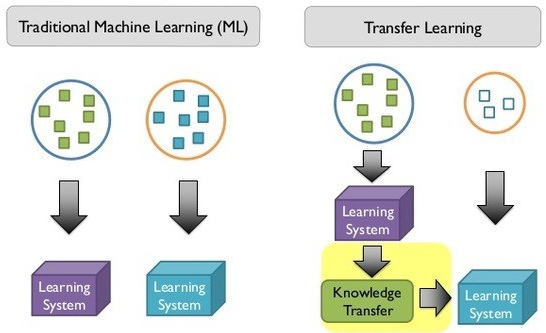An Automatic Detection of Brain Tumor using CNN & VGG19
Main Article Content
Abstract
According to the 2019 cancer statistics by WHO, brain tumors are considered the main cause of mortality related to cancer throughout the world and are known as one of the most common forms of cancer both in children as well as adults. Among the most common brain tumors, we have those that begin and tend to remain in the brain, which as meningioma with 34% of presence, another type of tumor is called glioma, arising from the surrounding tissue in the brain, it is part of 30% of all tumors in the brain, however, this glioma represents 80% of malignant tumors, making it the most common tumor common that causes death. However, this scheme depicts how convolutional neural networks using VGG19 model can provide an effective mechanism to detect brain tumors at an early stage using MRI images and can save the lives of mankind. Consequently, this research classified glioma brain tumor images using VGG-19 with HE preprocessing data. The model was tested to get a comparison of accuracy, precision, recall, and f1-score of the two test data, namely the original data and HE data. Based on the results of model testing, we can see in table2 that the original data produced the highest values of accuracy, precision, recall, and F1-score, with values of 97% accuracy, 100% precision, 97% recall, and 98% f1 score. While data using HE preprocessing has an accuracy value of 92%, precision of 100%, recall of 92%, and f1 score of 96%t..
Article Details
References
Arora R. The training and practice of radiology in India: current trends. Quant Imaging Med Surg. 2014 Dec;4(6):449-50. doi: 10.3978/j.issn.2223-4292.2014.11.04. PMID: 25525575; PMCID: PMC4256238.
ARI, Ali & Hanbay, Davut. (2018). Deep learning based brain tumor classification and detection system. TURKISH JOURNAL OF ELECTRICAL ENGINEERING & COMPUTER SCIENCES. 26. 2275-2286. 10.3906/elk-1801-8.
Cao, Zhantao & Duan, Lixin & Yang, Guowu & Yue, Ting & Chen, Qin & Fu, Huazhu & Xu, Yanwu. (2017). Breast Tumor Detection in Ultrasound Images Using Deep Learning. 121-128. 10.1007/978-3-319-67434-6_14.
Gao Yan and Su Fenzhen, "Study on machine learning classifications based on OLI images," Proceedings 2013 International Conference on Mechatronic Sciences, Electric Engineering and Computer (MEC), 2013, pp. 1472-1476, doi: 10.1109/MEC.2013.6885299..
E. A. Bayrak, P. K?rc? and T. Ensari, "Comparison of Machine Learning Methods for Breast Cancer Diagnosis," 2019 Scientific Meeting on Electrical-Electronics & Biomedical Engineering and Computer Science (EBBT), 2019, pp. 1-3, doi: 10.1109/EBBT.2019.8741990.
Chartrand, Gabriel & Cheng, Phillip & Vorontsov, Eugene & Drozdzal, Michal & Turcotte, Simon & Pal, Christopher & Kadoury, Samuel & Tang, An. (2017). Deep Learning: A Primer for Radiologists. RadioGraphics. 37. 2113-2131. 10.1148/rg.2017170077.
Johnson I. Agbinya, "11 Convolutional Neural Networks," in Applied Data Analytics – Principles and Applications , River Publishers, 2019, pp.185-204.
Cun, Y.. (1989). Generalization and network design strategies. Connectionism in Perspective.
Aggarwal, Charu. (2018). Neural Networks and Deep Learning: A Textbook. 10.1007/978-3-319-94463-0.
O'Shea, Keiron & Nash, Ryan. (2015). An Introduction to Convolutional Neural Networks. ArXiv e-prints.
Schmidhuber, Juergen. (2014). Deep Learning in Neural Networks: An Overview. Neural Networks. 61. 10.1016/j.neunet.2014.09.003.
Gholamalinejad, Hossein & Khosravi, Hossein. (2020). Pooling Methods in Deep Neural Networks, a Review.
Glorot, Xavier & Bordes, Antoine & Bengio, Y.. (2011). Deep Sparse Rectifier Neural Networks. Proceedings of the 14th International Conference on Artificial Intelligence and Statisitics (AISTATS) 2011. 15. 315-323.
Mohan, A., Dinesh Kumar, R. ., & J., S. . (2023). Simulation for Modified Bitumen Incorporated with Crumb Rubber Waste for Flexible Pavement. International Journal of Intelligent Systems and Applications in Engineering, 11(4s), 56–60. Retrieved from https://ijisae.org/index.php/IJISAE/article/view/2571
Chin, Ting-Wu & Zhang, Cha. (2020). Transfer Learning. 10.1007/978-3-030-03243-2_837-1.
Lisboa, P.j.g & John, Liverpool. (2022). Handbook of Research on Machine Learning Applications and Trends: Algorithms, Methods, and Techniques (2 volumes).
Pan, Sinno & Yang, Qiang. (2010). A Survey on Transfer Learning. Knowledge and Data Engineering, IEEE Transactions on. 22. 1345 - 1359. 10.1109/TKDE.2009.191.
https://medium.com/data-science-101/transfer-learning-57ce3b98650
Kamil, Mohammed. (2021). A deep learning framework to detect Covid-19 disease via chest X-ray and CT scan images. International Journal of Electrical and Computer Engineering. 11. 844-850. 10.11591/ijece.v11i1.pp844-850.
M. M. Krishna, M. Neelima, M. Harshali, and M. V. G. Rao, “Image classification using Deep learning,” International Journal of Engineering & Technology, vol. 7, no. 2.7, p. 614, Mar. 2018, doi: 10.14419/ijet.v7i2.7.10892.
H. Sultan, Hossam & Salem, Nancy & Al-Atabany, Walid. (2019). Multi-Classification of Brain Tumor Images Using Deep Neural Network. IEEE Access. PP. 1-1. 10.1109/ACCESS.2019.2919122.
Banerjee, Siddhartha & Ghosh, Bibek & Gangapadhyay, Ayan & Chatterjee, Himadri. (2021). Galaxy Morphological Image Classification using ResNet. Iraqi Journal of Science. 3690-3696. 10.24996/ijs.2021.62.10.27.
Mr. Kaustubh Patil, Promod Kakade. (2014). Self-Sustained Debacle Repression Using Zig-Bee Communication. International Journal of New Practices in Management and Engineering, 3(04), 05 - 10. Retrieved from http://ijnpme.org/index.php/IJNPME/article/view/32
Hu, Jie & Zhang, Xiaoqin & Maybank, Steve. (2020). Abnormal Driving Detection With Normalized Driving Behavior Data: A Deep Learning Approach. IEEE Transactions on Vehicular Technology. PP. 1-1. 10.1109/TVT.2020.2993247.
Pandey, Abhishek & Prasad, Deepak & Reddy, K. & Venkatesh, K. & Chand, Ajay & Nath, Vijay. (2023). Face Detection Using Convolutional Neural Network. 10.1007/978-981-19-1906-0_55.
Havaei, Mohammad & Davy, Axel & Warde-Farley, David & Biard, Antoine & Courville, Aaron & Bengio, Y. & Pal, Chris & Jodoin, Pierre-Marc & Larochelle, Hugo. (2015). Brain Tumor Segmentation with Deep Neural Networks. Medical Image Analysis. 35. 10.1016/j.media.2016.05.004.
Veni, N. & Manjula, J.. (2022). High-performance visual geometric group deep learning architectures for MRI brain tumor classification. The Journal of Supercomputing. 78. 10.1007/s11227-022-04384-9.
Belaid, O. N., & Loudini, M. (2020). Classification of Brain Tumor by Combination of Pre-Trained VGG16 CNN. Journal of Information Technology Management, 12(2), 13-25. doi: 10.22059/jitm.2020.75788
Ana Rodriguez, Kristinsdóttir María, Pekka Koskinen, Pieter van der Meer, Thomas Müller. Robust Decision Making through Machine Learning in Decision Science. Kuwait Journal of Machine Learning, 2(4). Retrieved from http://kuwaitjournals.com/index.php/kjml/article/view/215
Jang, Han-Ul & Choi, Hak-Yeol & Kim, Dongkyu & Son, Jeongho & Lee, Heung-Kyu. (2017). Fingerprint Spoof Detection Using Contrast Enhancement and Convolutional Neural Networks. 331-338. 10.1007/978-981-10-4154-9_39.
Li, Yi-Quan & Lin, Daw-Tung & Yeh, Zhe-Wei. (2019). Improving Deep Learning for Face Verification Using Color Histogram Equalization Data Augmentation. 10.11159/mvml19.103.
N., Senthilkumaran & Jayaraman, Thimmiaraja. (2014). Histogram Equalization for Image Enhancement Using MRI Brain Images. Proceedings - 2014 World Congress on Computing and Communication Technologies, WCCCT 2014. 80-83. 10.1109/WCCCT.2014.45.

